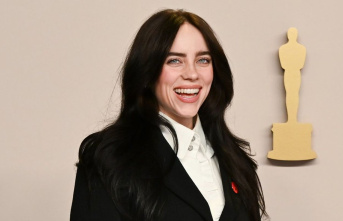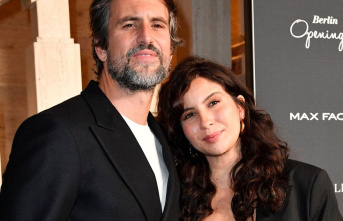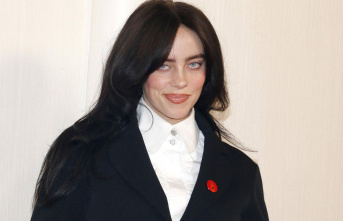To his death in 1929, the intellectual, and historian of German art Aby Warburg left unfinished his principal work, the Mnemosyne Atlas, a project that developed a research method to rethink the images through a more personal perspective and open to re-readings. The proposal could be likened to a kind of visual poem of infinite potential: a collage of images in appearance-random –about 2,000, organized in 60 tables, ranging from a magazine clipping of the golfer Erika Sellschop photographs of Mussolinni, or reproductions of figures of roman gods...– that aspired to map the collective memory of the culture, the knowledge and the history of western civilization from the point of view of the look.
In the wake not only of Warburg but also of many other thinkers who have tried to build an intellectual framework to define and understand the link between images, memory and politics (there are from Walter Benjamin and John Berger), producer and researcher in cultural Ingrid Guardiola (Girona, 39 years old) has released The eye and the blade (Arcadia), an essay in which, as she explains, is to unravel “the links between technology and power, as well as the inequities that this relationship fosters”. “Not only that,” adds the author by telephone, “but also what would be the tools or the stories alternative that could have. What happens when we think of the world as an interface? What change relationships psychological, social, and cultural?”.
Panel 39 of the 'Mnemosyne Atlas' of Aby Warburg.When, in 1936, Walter Benjamin spoke of the dissolution of the unique character of the images in his essay The work of art in the age of its technical reproducibility was referring, of course, to the new situation brought about by the development of photography and the cinema. But in the beginning of the third decade of the TWENTY-first century technology has magnified, expanded and clustered to limits unheard of. The Internet and mobile apps have been erected into a container is potentially infinite of images, and five companies (Facebook, Apple, Amazon, Netflix and Google) have on them something that, if it is not a monopoly, it seems a lot.
“One of the reasons for writing the book was the rise of publications on this wonderful future that gave us the digital technology connected, and how the work could find new niches through entrepreneurship”, explains Guardiola on the germ of his book, three years ago. “Those promises seemed a little suspicious, besides which they began to exit the first studies that questioned what was becoming the Internet, and especially how the Internet was transforming in an infrastructure of platforms, the basis of capitalist lucraba for the purchase and sale of data [the images are], and there it seemed to me that there was something about that work.”
at The beginning of the trial, Guardiola illustrates the sense that they have been acquiring images in the contemporary era with a quote from the writer David Foster-Wallace: “there Were two young fish who were swimming and they found a fish more old who swam in the opposite direction, greeted with the head and said: ‘Good day, guys. What about the water? And the two young fish continued to swim a little more and, in the end, one looked at the other and said: ‘what What in the hell is water?”. Images, today, are so ubiquitous as opaque. As common as they are indecipherable. “These are not explained by themselves, but by the principles of relationship, or the captions, or that we can get to say of them,” illustrates the author's view that demand for our society, “a school of the gaze”. “We should learn how to be spectators in the TWENTY-first century”.
Panel number 2 of the 'Mnemosyne Atlas' of Aby Warburg.The hiperconexión, the utmost vigilance, the construction of a new temporality and even the reorganization of the public space around the cities are all derivatives of the commodification of the gaze, the result of the evolution of the capitalist system catching. Among the tools that Guardiola prescribed to address the current over-exposure to the images is the apropiacionismo: a reuse-aware of the visual material, which allows you to transform it for the purposes of critical, dialectical and leisure and also to fight against their invisibility, in the case of all those images that just wandering the Internet "anonymously, and anómica, as messages in a bottle thrown into the open of a vast ocean".
Guardiola mentioned throughout the pages several examples of appropriation or re-use of images for art: project 9 eyes, of Jon Rafman, who brings together images of tone poetic or loss captured by the eye unmoved from Google Street View; Noah Kalina, who makes collages of their own self-portraits in time lapse to compress several years of his life in a few minutes; or Azahara Cerezo and Mario Santamaria who, in their work in 2015 Comentaris a la ciutat screen / Comments on the Screen City compendiaron images from security cameras and webcams from different cities to conform to the idea of "generic city".
these are All examples of a view differing on the images hiperubicuas. "The first portraits that are preserved are The Fayum, and is made with the person alive for, once dead, seek a good trip for the soul of the deceased" says Guardiola. "These images were made to not be seen, while the current are permanently in circulation and overexposed. For me, this changes their function and their nature. It is interesting to see that the majority of the images that circulate through the social networks do not have a mood of transcendence, but that are images of ephemeral nature, of immediate communication, but do not have that intention transcendent. There will be a moment that when people realize that we have relegated the memory to the machines, and the machines keep the images without the power who kept the memorials of a file, we will begin to take control and decide what images we can expose publicly and which not, and which of these images continue to have a value of the drug for the memory."
Date Of Update: 29 December 2019, 10:00










